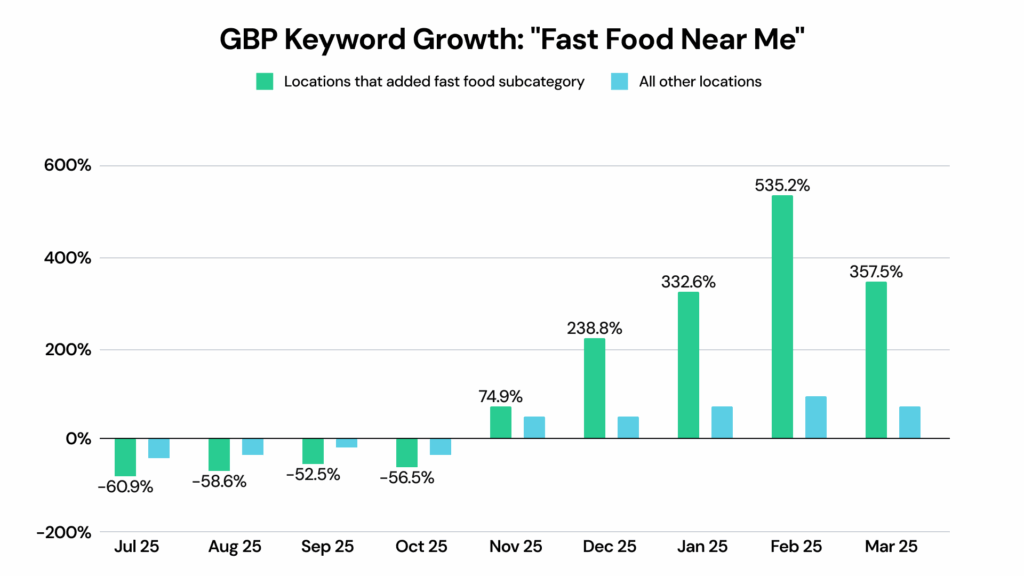Sparks of Genius: How One Simple Tactic Drove a 350% Surge in Local Search Visibility for a Fast Casual Brand
Summary
One small Google Business Profile update unlocked explosive visibility for a national fast casual brand—delivering a 350% jump in local search impressions. The secret? A simple tweak to secondary categories that put the brand in front of far more hungry customers searching nearby.
How One Simple Tactic Drove a 350% Surge in Local Search Visibility for a Fast Casual Brand
When it comes to local SEO, small changes can have outsized effects. A recent case involving a popular fast casual sandwich chain highlights how a simple but strategic update to Google Business Profiles (GBPs) led to a 350% increase in local search impressions—just by optimizing secondary categories.
This example offers a compelling reminder: GBP category strategy matters. A lot.
The Overlooked Power of Secondary Categories
Most businesses know that selecting the right primary category for their GBP is critical—it tells Google what the business is about. But secondary categories, often treated as an afterthought, can significantly influence where and how often a business appears in local search results.
In this case, the brand was already performing well under the primary category “Sandwich Shop.” However, an analysis of their category setup revealed a key opportunity: adding contextually relevant secondary categories that better reflect consumer search behavior.
The recommended additions included:
- Fast Food Restaurant
- Lunch Restaurant
These categories fit with how consumers often describe or look for similar dining options, even if the core offering remains the same. Importantly, secondary categories are recognized as a ranking factor by many local SEO experts, and this example reinforces why they deserve more attention.
A Real-World Test: Who Adopted and Who Didn’t
Not all locations made the update at the same time. Some added the “Fast Food Restaurant” secondary category; others kept their existing category setup. This natural split created a valuable real-world comparison of the tactic’s impact.
The Results: 350% YoY Growth in Search Impressions
Over the next four months, the difference between the two groups was striking:
- Locations that added “Fast Food Restaurant” as a secondary category saw a 350% year-over-year increase in search impressions for that term.
- Locations that didn’t saw only a 74% increase over the same period.

These numbers suggest that the change in visibility wasn’t coincidental — it was directly tied to the addition of the new category. The locations that made the update were simply showing up more often when consumers searched for fast food options nearby.
Why This Tactic Works
Google’s local search algorithm relies on a blend of signals—relevance, proximity, and prominence among them. By using additional relevant categories, a business increases the number of ways it can be found: it tells Google, “We’re not just a sandwich shop—we’re also a place for lunch, and a fast food option.”
This approach helps your profile rank for a wider array of search queries without changing anything about the business itself. It’s a low-effort, high-impact optimization.
What Local Marketers Should Do Now
For marketers managing local listings—whether for a large chain or a small regional brand—this case shows just how effective category optimization can be. Secondary categories shouldn’t be an afterthought; they’re a crucial part of your local SEO strategy.
Tip: Regularly audit your GBP categories. Look at how consumers are finding you, and test updates that reflect broader or adjacent search intent. Remember that Google regularly adds new categories; if the perfect category isn’t available now, be sure to check back every few months to see if it’s been added.
Small changes can yield big results. As this fast casual brand discovered, being thoughtful about how your business is categorized can be a powerful lever for visibility—and growth.




